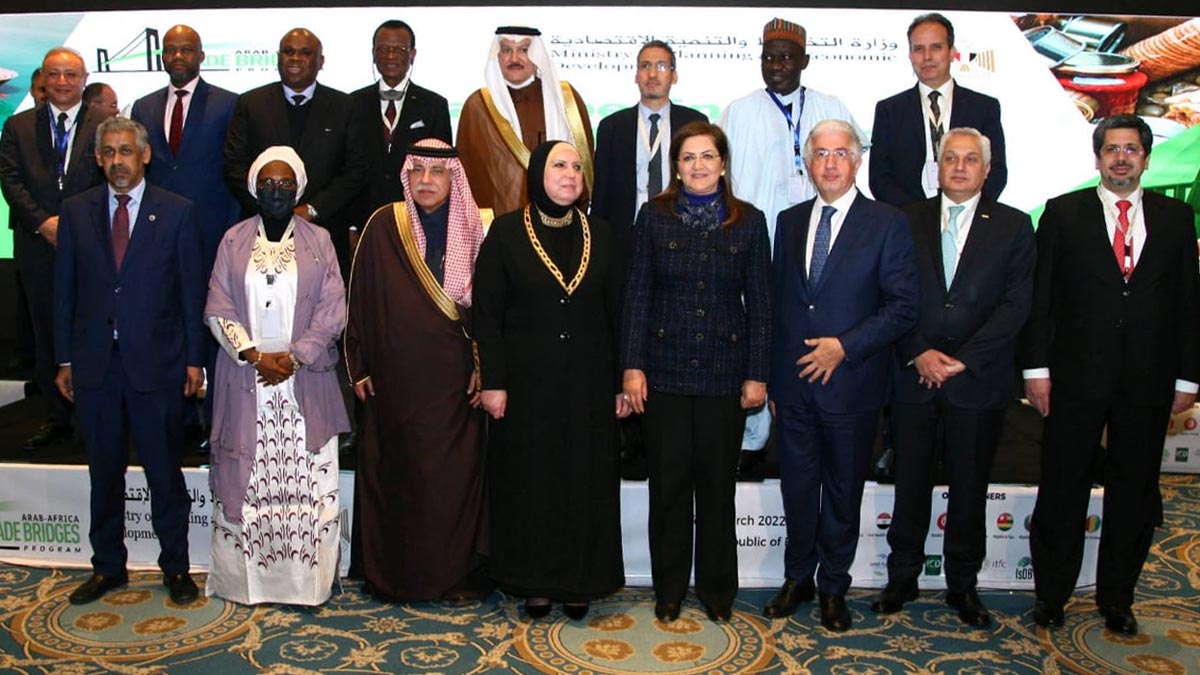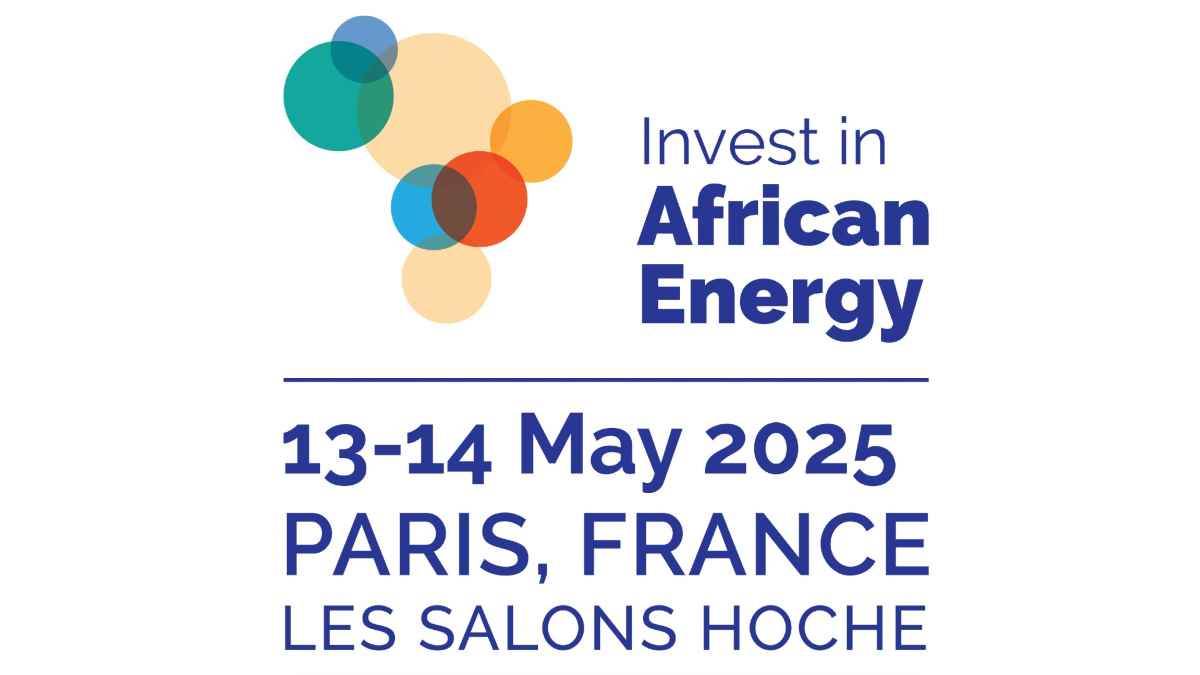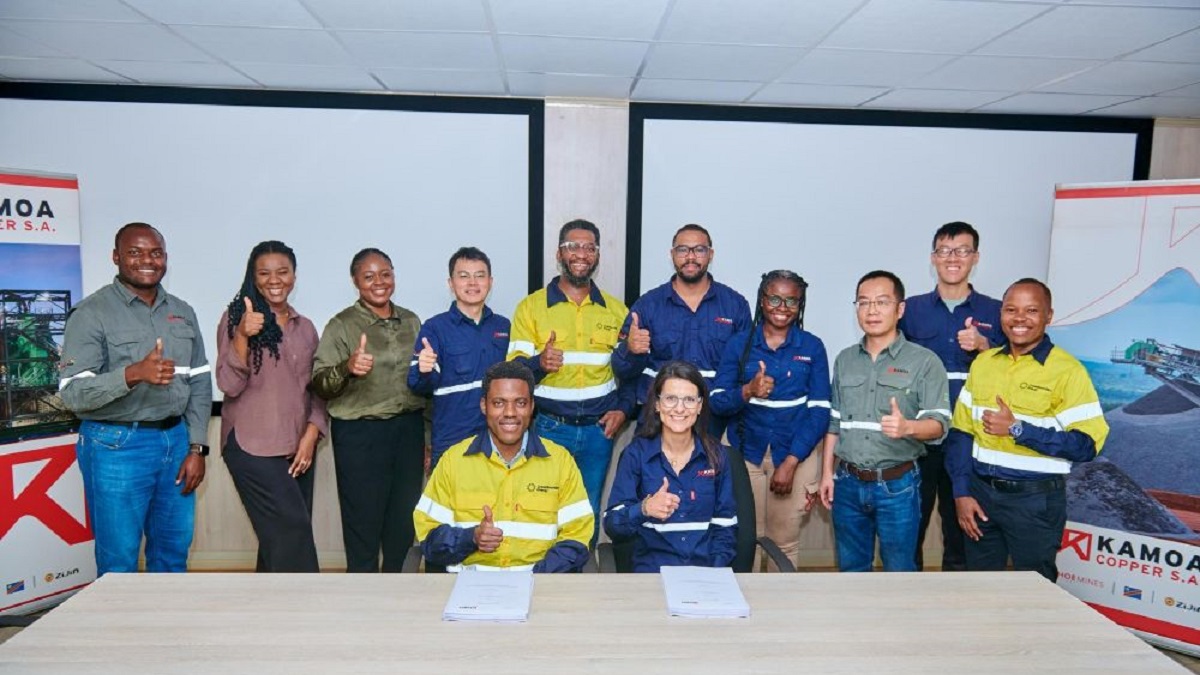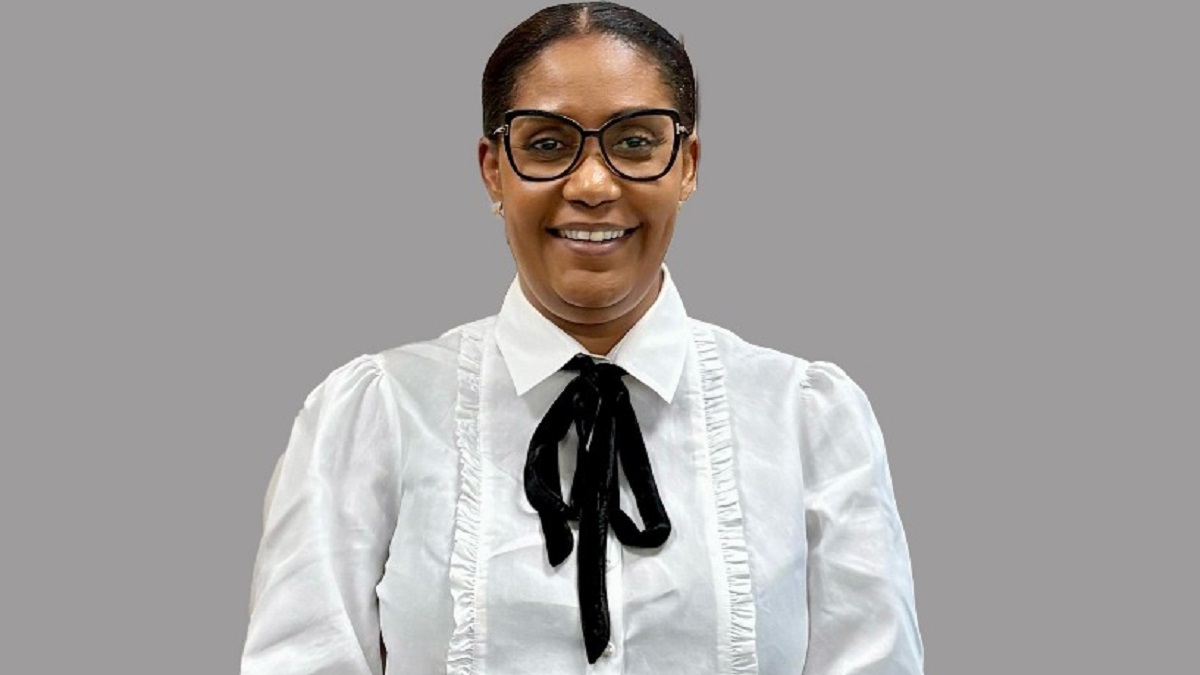The landmark event included a round table discussion on the role of the AATB Program in the implementation of the AfCFTA across both regions
CAIRO, Egypt, March 22, 2022 — The 3rd Annual Board of Governors (BoG) Meeting of the Arab-Africa Trade Bridges (AATB) Program recently held in Cairo, Egypt, chaired by Dr. Hala ElSaid, Minister of Planning and Economic Development, convened all partners, strategic stakeholders, and public and private sector players in the Program to reinforce the role of regional value chains across Arab and Africa states in support of the AfCFTA. The landmark event included a round table discussion on the role of the AATB Program in the implementation of the AfCFTA across both regions.
Notably, a memorandum of understanding was signed by the Islamic Corporation for the Insurance of Investment and Export Credit (ICIEC) and Afreximbank. This agreement lays out a dedicated program that will focus on risk sharing, credit enhancement for export and import financing, supporting the bank’s digitalization transformation, capacity building and marketing.
During the opening ceremony, H.E. Dr. Hala El Said, Minister of Planning and Economic Development of the Arab Republic of Egypt and Chairperson of the AATB Board of Governors also mentioned: ” The AATB meeting provided an opportunity to consult and exchange ideas, visions, and successful experiences to enhance our efforts to develop trade and investment flows between African and Arab countries. The Arab Republic of Egypt takes pride in the continuous and fruitful cooperation with the International Islamic Trade Finance Corporation (ITFC) and other strategic partners through the AATB Program.”
“A vital role of the AATB Program is promoting regional and continental trade and investment cooperation between Egypt, Arab countries, and African countries. The Program promotes critical areas such as capacity building programs to support women in trade, supporting SMEs, and exporters, while addressing the negative effects of the corona virus on Arab and African economies through vital interventions in health and food security.”-said H.E. Mrs. Nevin Gamea, Minister of Trade and Industry of the Arab Republic of Egypt.
In his speech, H.E. Dr. Majid Bin Abdullah AlKassabi, Minister of Commerce, Kingdom of Saudi Arabia stated that “Africa consists of 54 Countries, and it is a continent rich in human and natural resources. The AATB Program is a wonderful opportunity for trade development for both African and Arab regions as well for connecting and facilitating trade exchange between African countries. Therefore, we need to employ all resources to drive trade reinforcement and promote trade resilience, and this is what the AATB Program will have a significant impact on.”
Mr Alamine Ousmane Mey, Minister for Economy, Planning and Territory Development, Cameroon, added, “Covid-19 and recent geopolitical developments have shown that we need to strengthen our ties and trade amongst OIC member countries. In Cameroon, we are committed to pursuing sustainable and inclusive development through our national development strategy and the AfCFTA. We are also looking to build high structural transformation and nurture human capital as well as promote a greater interaction with the world economy.”
In his opening remarks, Professor Benedict Oramah, President and Chairman of the Board of Directors of Afreximbank said “With the world in a state of continuing crises, partnerships like the Arab-African Trade Bridges Program will strengthen the African and the Arab world to address the trade and economic consequences of these crises, working to mitigate any long-lasting impact.”
H.E Dr. Sidi Ould Tah, Director General, Arab Bank for Economic Development in Africa (BADEA), Ex-Chairman of the Executive Committee (2017-2021) said “AATB is a program of cooperation between Arab and African Countries. BADEA, as one of the founding partners of AATB supports and funds infrastructure projects in Africa that facilitate trade and promote development. Through these efforts, we will continue to assist and support AATB objectives to enhance trade and investment opportunities within between the two regions.”
Eng. Hani Salem Sonbol, CEO of ITFC stated: “The AATB program has been instrumental in mitigating the negative effects of the COVID-19 pandemic on the health and food security sectors. Research conducted by ITFC indicates that the AfCFTA will contribute to the creation of regional value chains and will provide an opportunity for governments to participate in enhancing skills and investing in productive capacities which will accelerate the regions return to more inclusive growth. ITFC together with its partners will continue to play its role towards the development of Arab-Africa trade as well as fostering stronger integration between African countries through trade facilitation.”
The roundtable session was graced by high-level speakers including AATB partners, stakeholders and Ministers of OIC member countries who spoke on the theme; “Regional Value Chains and their Importance in increasing Trade and Investment Flows between Arab and African countries”. Key outcomes of this session highlighted upcoming focus areas in light of renewed direction following the COVID-19 pandemic and major successes achieved thus far, as well as demonstrating a commitment to strengthening cooperation while promoting the importance of inter-regional partnerships and the power of alliances in light of the AfCFTA.
Commenting on the signing of a memorandum of understating, Mr. Oussama Kaissi, CEO, Islamic Corporation for the Insurance of Investment and Export Credit (ICIEC) ICE-IK stated: “We look forward to effect this wide-ranging MoU with Afreximbank to facilitate and promote African trade. We are confident that the MoU will further consolidate our existing good relations with the Bank as we pursue our mutual objective of boosting intra Arab African trade in OIC member countries. In support of boosting intra trade between the two regions, ICIEC will leverage our tried and tested suite of de-risking and credit enhancement solutions.”
“ICD is keen to support the AATB Program by promoting and increasing the investment flows between African and Arab member countries. ICD will lead the Investment Pillar of the AATB Program, which aims to mobilize and allocate resources to impactful investments in Arab and African countries” said Mr. Ayman Sejiny, CEO, Islamic Corporation for the Development of the Private Sector (ICD).
Commenting on the potential of Arab-Africa value chain, Mr. Wamkele Mene, Secretary General, African Continental Free Trade Area (AfCFTA) said:” The African Continentcontributes less than 3% to Global Trade and output and less than 2% to global GDP, which is largely because of the deficit in industrial capacity. This regional partnership presents an opportunity for all of us to identify critical value chains for productive sector investment to create jobs on the African continent.
On the sidelines of the 3rd Annual Board Meeting, a visit to Egypt’s Medicine City was organized to showcase Egypt’s capabilities in the medicine supply chain production. Africa’s healthcare industry is of great importance to the AATB Program, and this is reflected under AATB’s, “Harmonization of Pharmaceutical Standards” which aims to boost the manufacture of high-quality homegrown pharmaceutical products and services.
Since its launch in 2017, the Arab Africa Trade Bridges program has become the foremost platform in driving trade between Africa and the Arab regions with important initiatives that strengthen growth and prosperity in beneficiary countries.
Distributed by APO Group on behalf of International Islamic Trade Finance Corporation (ITFC).


 Business3 days ago
Business3 days ago
 Business3 days ago
Business3 days ago
 Business4 days ago
Business4 days ago
 Business3 days ago
Business3 days ago
 Business3 days ago
Business3 days ago
 Business3 days ago
Business3 days ago
 Business4 days ago
Business4 days ago
 Business4 days ago
Business4 days ago














